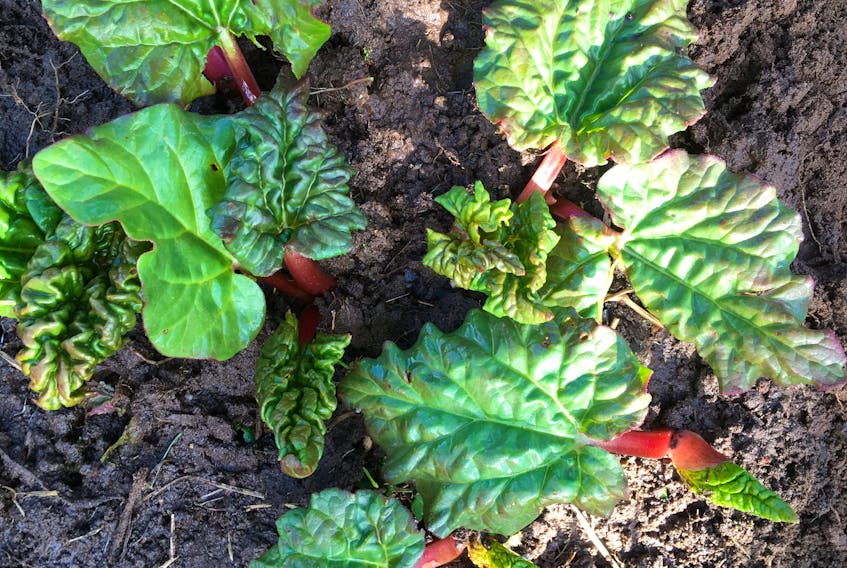When the soil warms just enough, rhubarb bursts out of the soil, bringing us the first tastes of the season to come.
Rhubarb is an old-fashioned favourite, once a standard on every farm, and is often still found on abandoned properties.

Rhubarb has been cultivated for more than 1,000 years for the medicinal value of its root and was one of the goods that Marco Polo sought in his medieval travels to China.
It seems to have disappeared from the modern garden, despite it being as much a herald of spring as pussy willows, and maybe the easiest food to grow, ever.
It is wonderful, however, to see old ways appreciated again. While few have a rhubarb patch, many are looking to re-establish one, and farmers markets and mainstream stores can usually be depended upon as a source. But my, how cheap and easy it is to grow your own.
Starting rhubarb typically involves taking a piece of a root mass, which then sprouts a new plant. Leaves arise right from the ground. The leaves are poisonous, as many know, but the leaf stalks are the attraction.
Rhubarb likes full sun but can live in less light. They like in-between soil moisture — not too wet, not too dry. Since you are looking to grow lots of leaves, once a year, in fall or spring, generously apply a nitrogen-rich fertilizer such as manure.
If you remove the flower stalk, energy is focused into the leaves. However, the flower stalk adds to its appeal as an ornamental plant in a flower bed. Large patches can be divided by cutting and planting a piece from the root mass in early spring.
Many remember the childhood treat of dipping tart raw stalks into sugar. Typically rhubarb is gently stewed with sugar, but rhubarb juice is so refreshing, and you can make a lovely rhubarb crisp or grunt, and of course rhubarb pie (strawberries optional).

Many know that you only need to chop and freeze rhubarb in a plastic bag to store. Ginger, cinnamon and nutmeg are complementary spices.
Rhubarb is best picked when the stalks are still young and tender. A tug at the stalk usually takes the whole stem out neatly, which is preferable to leaving some of the stalk behind when cutting. I cut the leaves off the stems right in the garden, for simplicity’s sake. While red stems are prized, colour isn’t necessarily related to sweetness.
Rhubarb has a wild (introduced) edible cousin. Japanese knotweed, often called buckwheat (because it belongs to the buckwheat family) is that most unpopular character which can overtake a space in no time and takes a serious effort over years to eradicate. In the spring, last year’s six-foot woody stalks stand as testament to its abundance.
Japanese knotweed, or buckwheat, can be used in the same way as rhubarb. Young emerging shoots are cut when they are tender and cooked in sweet dishes, but they can also be prepared like asparagus. I’ve boiled up some this spring and find the flavour to be very much like fiddleheads. Do not plant this curiosity in your yard. Look for patches growing in clean environments and harvest from those.
Caroline Cameron lives in Strathlorne, Inverness County and offers gardening and hiking guide services around Cape Breton Island. She welcomes your gardening comments and questions at [email protected] and on Facebook at Nature/Nurture Gardening & Hiking.









